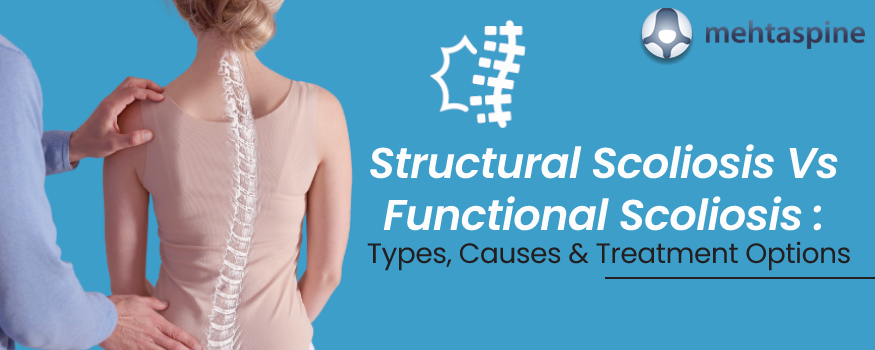Structural Scoliosis Vs Functional Scoliosis
Each scoliosis case is different from the others, not only in terms of severity but also in the aetiology and treatment. However, almost all cases of Scoliosis can be broadly divided into two types, namely, Structural Scoliosis Vs Functional Scoliosis.
In this blog today we provide all the essential information about these two types of Scoliosis to help you gain more awareness about Scoliosis. Read on:
- Functional Scoliosis: This type of Scoliosis is where the spine is curved due to external factors – postural problems, muscle spasms, irregular limb length and more. Any external factor within the body that impacts the symmetry of the body will affect the spine. As a result, the spine tends to curve to compensate for this asymmetry caused by these irregularities.
- Structural Scoliosis: The most common type of Scoliosis where the spine physically tends to curve sideways due to inherent problems like neuromuscular conditions or joint deterioration. The majority of Scoliosis cases fall under this type of Scoliosis.
Structural Scoliosis Vs Functional Scoliosis: Types & Causes
Types of Structural Scoliosis & Causes – Structural Scoliosis can be further divided into four categories based on the cause that triggered the curvature:
- Idiopathic Scoliosis: The name itself refers to the condition whose causes are not certainly known. Spine specialists in UK speculate the abnormalities in nerve, bone, and muscular development for this type of Scoliosis.
- Degenerative Scoliosis: Degeneration of joints that occurs due to age-related factors can result in Degenerative Scoliosis.
- Neuromuscular Scoliosis: Neuromuscular conditions like Cerebral Palsy may cause Neuromuscular Scoliosis.
- Congenital Scoliosis: In rare cases, Scoliosis may also happen to the baby during the pregnancy.
Types of Functional Scoliosis & Causes:
Functional Scoliosis can be categorized into four types based on the specific external factor causing the spinal curve:
- Posture: A chronic faulty posture combined with a lack of right exercise can result in Postural Scoliosis.
- Difference in Limb length: The spine may have to compensate for the difference in the length of the limbs resulting in a curved spine. This condition is termed Compensatory Scoliosis.
- Inflammation in the body: The spine may also respond to the inflammation in the body and compensate for it with a minor curve in the back leading to Inflammatory Scoliosis.
- Movement of Sciatic nerve: The abnormal movement of the sciatic nerve in the lower back may also trigger the curve of the spine leading to Sciatic Scoliosis.
Structural Scoliosis Vs Functional Scoliosis – Treatment in the UK:
Scoliosis is treated based on the underlying condition that is causing the spinal curve and the severity of the curvature. Exercises, braces and surgery are the methods used by a spine specialist to correct Structural Scoliosis.
Since Functional Scoliosis is caused by a variety of external factors, it is treated differently from structural scoliosis. A spine specialist identifies the cause of Functional Scoliosis and then prescribes the right treatment course for the individual. Treatment for this type of Scoliosis usually involves a Scoliosis-Specific Exercise Program that is customized to sort out the muscular imbalances and correct the posture. For more information on the treatment for Scoliosis in UK, you can contact the Children & Adult Spinal Surgeon in UK Mr Jwalant S Mehta


